The Arabic letter Zay (ز) is one of the important letters in the Arabic alphabet. It is distinguished by its simple shape and smooth pronunciation. Like other Arabic letters, the shape of Zay changes depending on its position in a word. However, it has a unique feature—it does not connect to the letter that follows it. In this lesson, we will explore the different forms of the letter Zay in the beginning, middle, and end of words, along with illustrative examples to facilitate understanding and practical application.
Worksheets to Train Students on the Forms of the Letter Zay
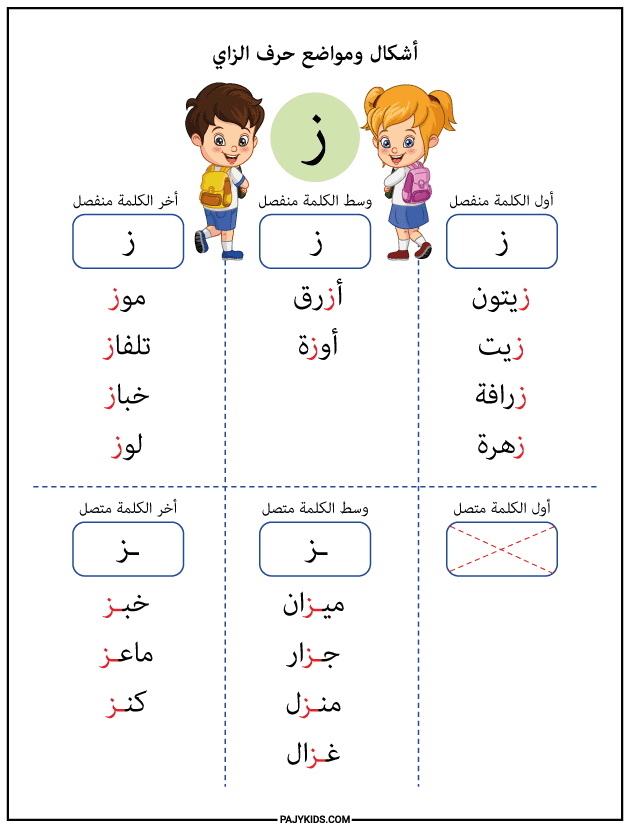
- Zay at the Beginning of a Word
When the letter Zay appears at the beginning of a word, it is written separately from the following letter because it does not connect to it. Its form is: ز.
Examples: Zayt (زيت) – oil, Zarafa (زرافة) – giraffe.
This is the simplest form of the letter Zay and is easy to recognize, especially in familiar words for children and beginners.
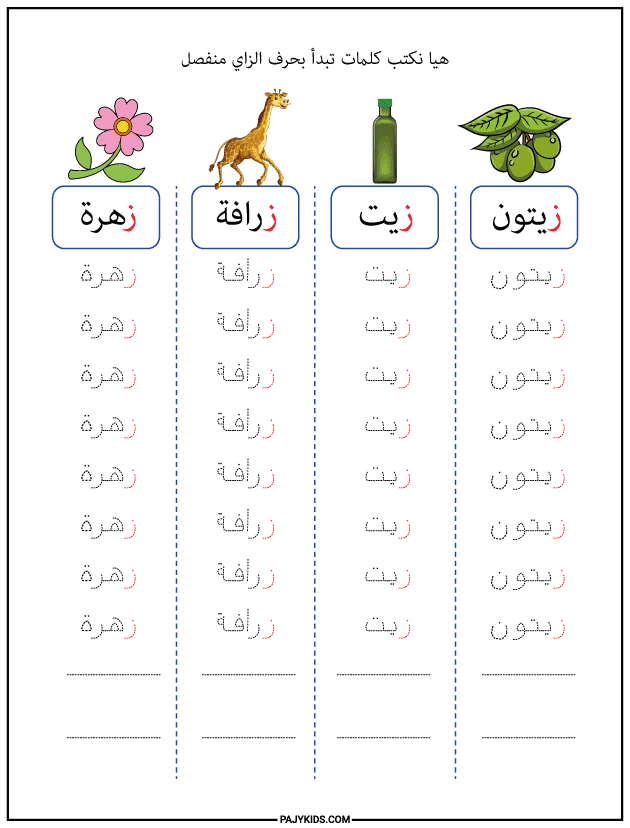
- Zay in the Middle of a Word – Connected
In the middle of a word, Zay connects to the letter before it but not to the letter after it. Its shape becomes: ـز.
Examples: Meezan (ميزان) – scale, Jazzar (جزار) – butcher.
This position requires good visual training to distinguish the form of Zay within the word and is one of the forms of the letter Zay that beginners often confuse.
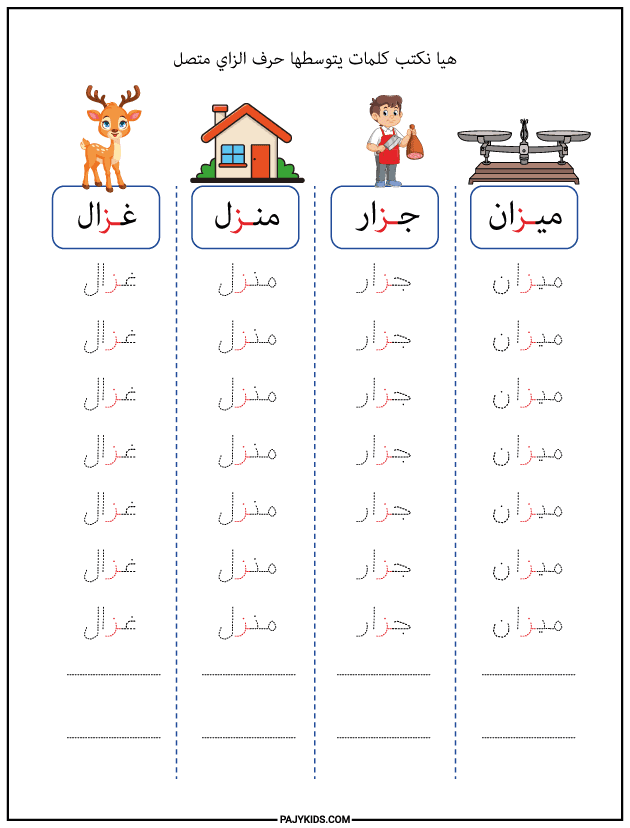
- Zay in the Middle of a Word – Isolated
In some words, Zay may appear in the middle but isolated from both the preceding and following letters. In such cases, it retains its original form: ز.
Examples: Azraq (أزرق) – blue, Ooza (أوزة) – goose.
This form also demands visual recognition and is another form of Zay that learners may initially find tricky.
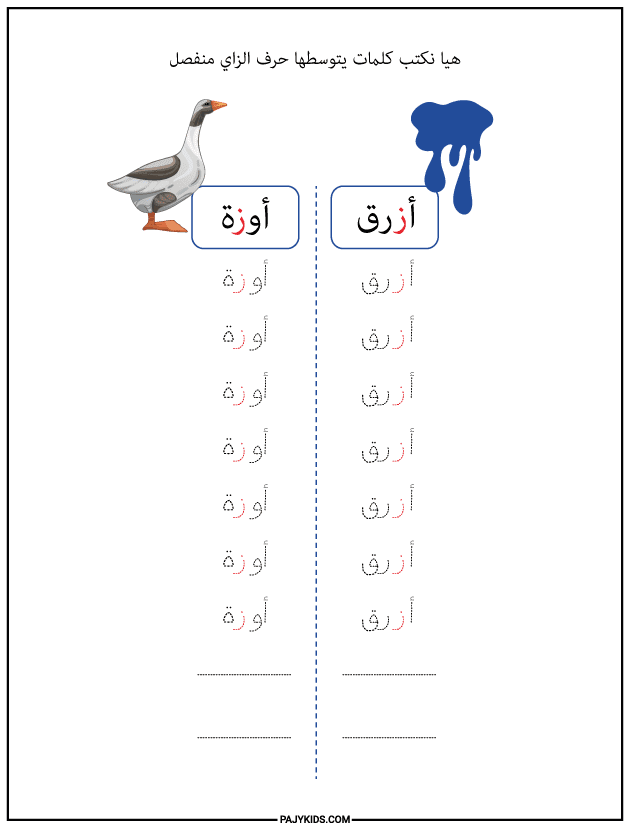
- Zay at the End of a Word – Connected
When Zay comes at the end of a word and is connected to the letter before it, it appears as: ـز.
Examples: Aziz (عزيز) – dear, Khubz (خبز) – bread, Kanz (كنز) – treasure.
This is a very common form in everyday vocabulary and one of the most frequently seen forms of the letter Zay in written Arabic.
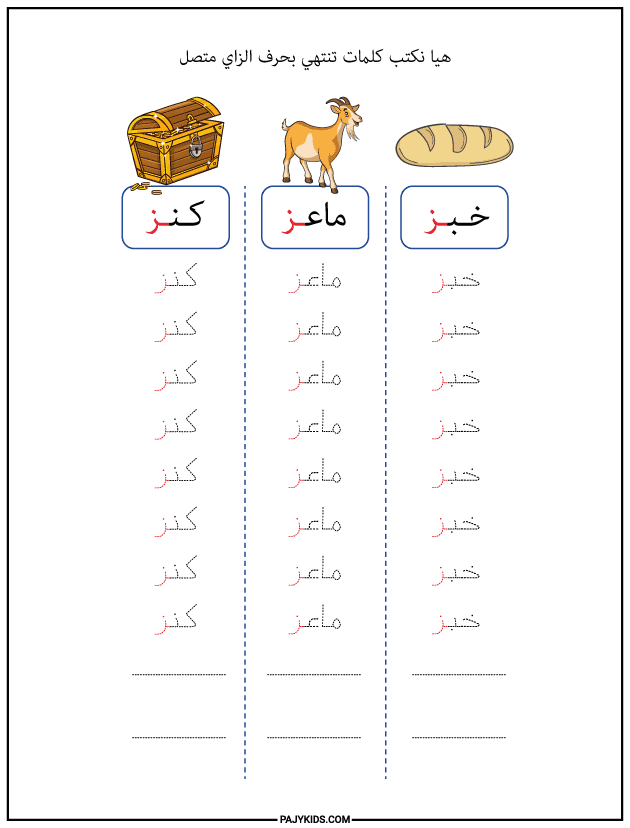
- Zay at the End of a Word – Isolated
If Zay is at the end of a word and follows a letter that does not connect to it, it is written in its standalone form: ز, just like at the beginning.
Examples: Mawz (موز) – banana, Tilfaz (تلفاز) – television, Khabbaz (خباز) – baker.
This form is especially easy for children to write since it remains unchanged and requires no connection to adjacent letters.
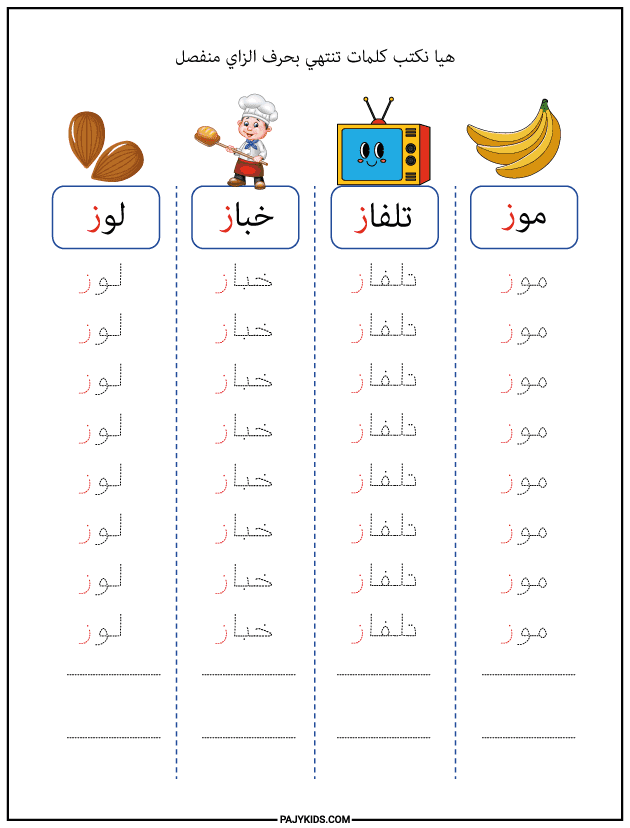
The letter Zay closely resembles the letter Ra (ر) in shape, but Zay is identified by the dot above it. Therefore, it’s crucial to train learners to distinguish between them using repeated writing and visual activities. This helps reinforce the correct forms of the letter Zay in the learner’s mind with accuracy and confidence.